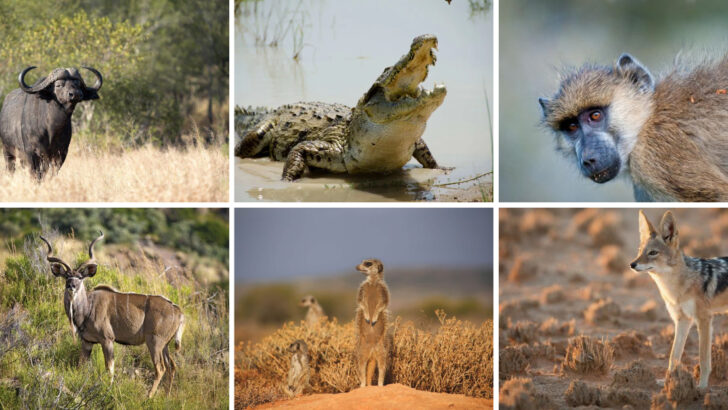The African savanna is not just a place—it’s a battleground, a sanctuary, and a stage for some of the most incredible survival stories on Earth. Here, life is fierce, unpredictable, and breathtakingly beautiful.
From towering elephants who mourn their dead to cheetahs fighting against extinction, every creature has a tale of resilience. Some rely on speed, others on brute strength, and a few, like the cunning honey badger, on sheer audacity.
But survival isn’t just about instincts—it’s about heart. Lions form deep family bonds, zebras refuse to leave an injured friend behind, and giraffes silently endure brutal droughts, always moving forward.
Ready to meet the warriors of the wild? These 22 majestic animals don’t just live in the savanna—they conquer it, one challenge at a time.
African Elephant
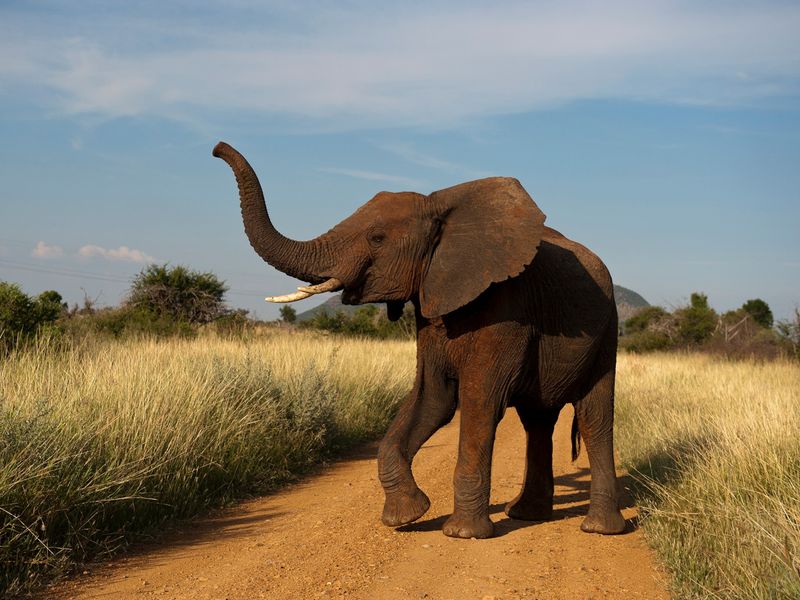
The African elephant is a marvel of nature, known for its intelligence and deep family bonds. These gentle giants traverse the savanna in matriarchal groups, led by the oldest female. Their survival story is one of resilience, as they face threats from poaching and habitat loss. Despite their size, elephants are surprisingly agile, using their trunks as versatile tools.
They communicate through low-frequency sounds, maintaining contact over vast distances. Conservation efforts are crucial, as these magnificent creatures play a pivotal role in maintaining the ecological balance. Their story is a testament to strength and endurance.
Lion
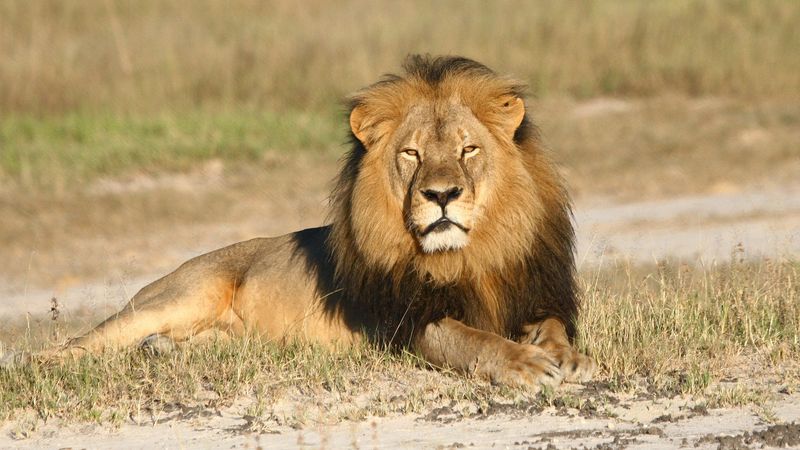
Lions, often dubbed the kings of the jungle, reign supreme in the African savanna. Living in close-knit prides, these majestic predators rely on teamwork to hunt and defend their territory. Their survival hinges on cooperation and strategic hunting tactics. Male lions, with their impressive manes, guard the pride, while lionesses are the primary hunters.
Lions’ roars echo across the savanna, a reminder of their dominance. However, their numbers are dwindling due to habitat encroachment and human-wildlife conflict. Protecting their territory is crucial to ensure the lion’s legacy endures for future generations.
Cheetah
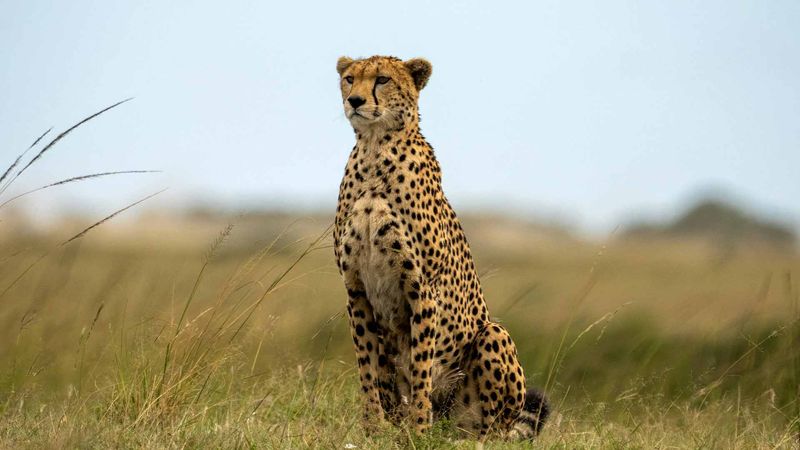
Renowned for their speed, cheetahs are the fastest land animals, capable of reaching speeds up to 70 mph. These elegant creatures are built for speed, with slender bodies and long limbs. Their survival depends on their ability to catch prey swiftly, often relying on stealth and acceleration.
Cheetahs face numerous challenges, from habitat fragmentation to competition with larger predators. Their distinct black tear markings help reduce glare and focus on prey. Conservation programs aim to protect these agile hunters by securing habitats and reducing human-wildlife conflict. Their story is one of grace and agility in the wild.
Giraffe
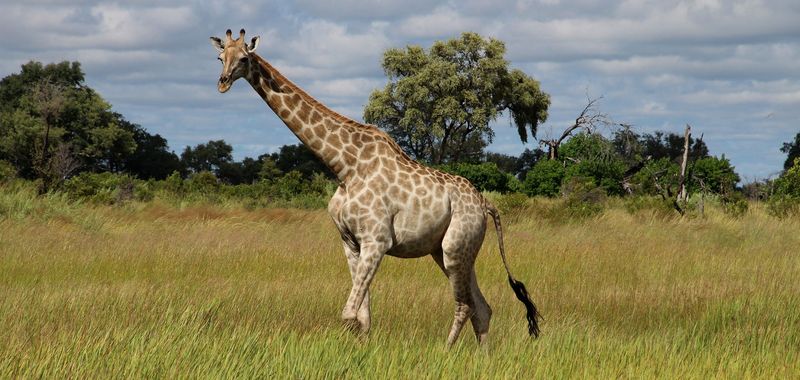
Giraffes, with their long necks and unique patterns, are icons of the African savanna. Standing tall among the acacia trees, they graze on leaves unreachable to other herbivores. Their height gives them a vantage point to spot predators from afar. Giraffes are social animals, often found in loose herds, relying on their keen eyesight for survival.
Despite their size, giraffes are surprisingly vulnerable to lions and poachers. Conservation efforts focus on safeguarding their habitats and addressing the threats they face. These gentle giants embody grace and serve as a reminder of nature’s wonders.
Zebra
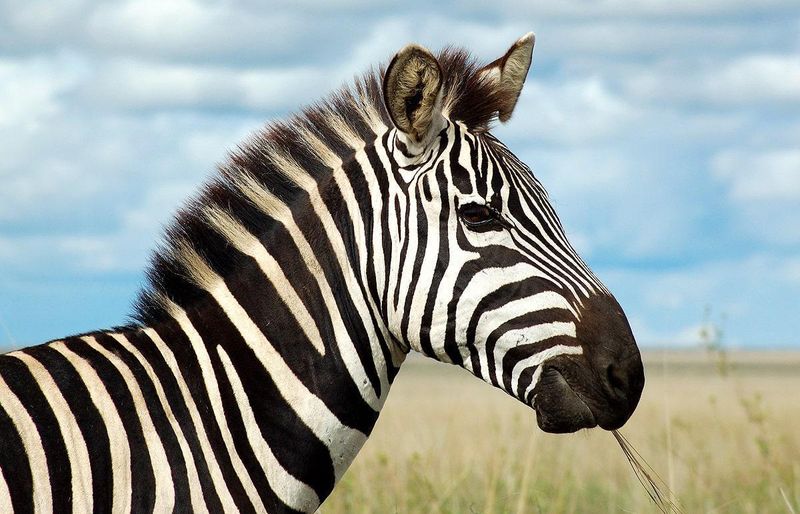
Zebras, with their iconic black and white stripes, are a common sight in the savanna. These social animals live in herds, relying on their stripes for camouflage and confusing predators. Their survival story is one of adaptation, as they navigate the dangers of the wild, from lions to drought. Zebras communicate through vocalizations and body language, maintaining tight-knit bonds.
Their stripes are unique to each individual, much like human fingerprints. Conservationists work to preserve their habitats and protect them from poaching. Zebras’ resilience and social nature make them fascinating subjects of the savanna.
African Buffalo
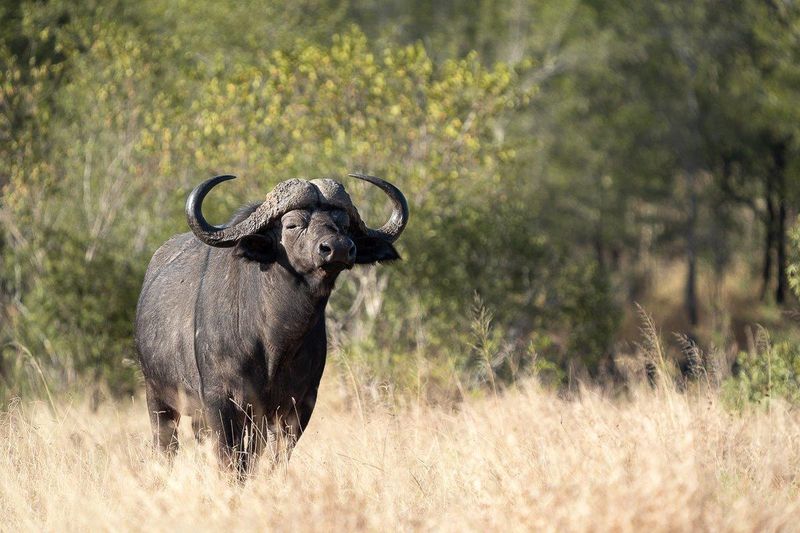
African buffaloes, known for their strength and solidarity, are formidable residents of the savanna. These robust herbivores live in large herds, providing protection against predators like lions. Their survival is a testament to the power of unity and numbers. Buffaloes communicate through vocalizations and body language to coordinate movements and alert others to danger.
They play a crucial role in shaping the ecosystem, influencing vegetation patterns. Despite their sturdy build, buffaloes face threats from disease and habitat loss. Protecting these resilient creatures ensures the continued diversity and health of the savanna ecosystem.
Rhinoceros
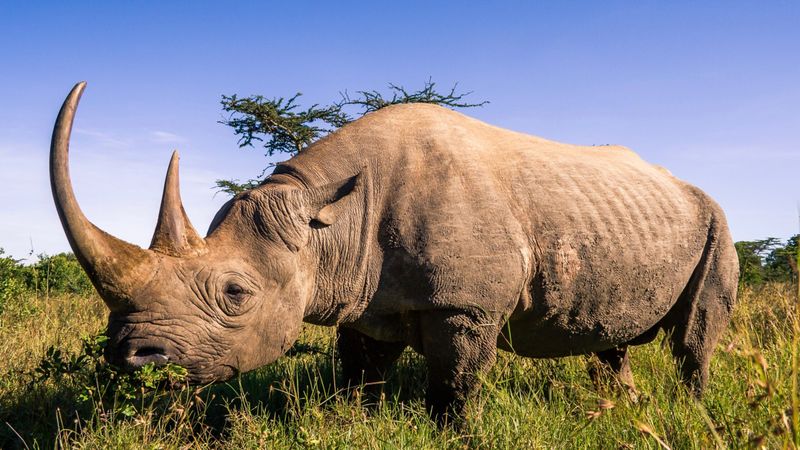
Rhinoceroses, with their characteristic horns, are among the most endangered animals in the savanna. Their survival story is fraught with challenges, primarily due to poaching for their horns. Despite their bulky appearance, rhinos are agile and can charge at impressive speeds when threatened.
They are solitary creatures, often found grazing on grasses. Conservation efforts focus on anti-poaching measures and habitat restoration to protect these magnificent beasts. Rhinos play a vital role in their environment, helping to maintain the balance of plant communities. Their story is a poignant reminder of the need for conservation.
Hyena

Hyenas, often misunderstood, are adaptable survivors of the savanna. Known for their distinctive ‘laugh,’ these carnivores play a critical role as scavengers, cleaning up the ecosystem. Living in matriarchal clans, hyenas exhibit complex social structures and communication.
Their powerful jaws can crush bones, allowing them to consume nearly every part of their meals. Hyenas’ cunning nature helps them thrive despite competition with lions and other predators. Their survival is intertwined with the health of the savanna, highlighting the importance of each species in the interconnected web of life.
Hyenas dazzle with their resilience.
Wildebeest
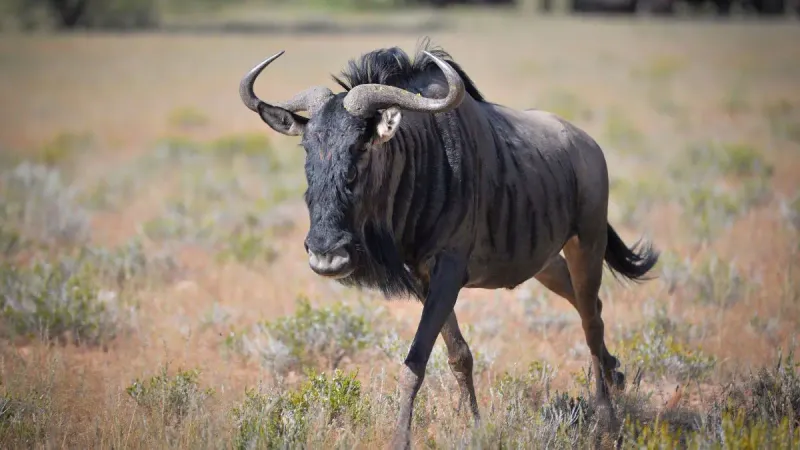
The wildebeest migration is one of nature’s most spectacular events, as millions of these animals traverse the savanna in search of greener pastures. Their journey is fraught with peril, from predators like lions and crocodiles to the treacherous river crossings.
Wildebeests’ survival relies on their instinct to move in large herds, creating a formidable force against threats. This annual migration plays a crucial role in the ecosystem, replenishing the grasslands and supporting other wildlife. Conservationists monitor the migration routes to ensure these vital pathways remain unobstructed. Wildebeests inspire awe with their epic journeys.
Hippo
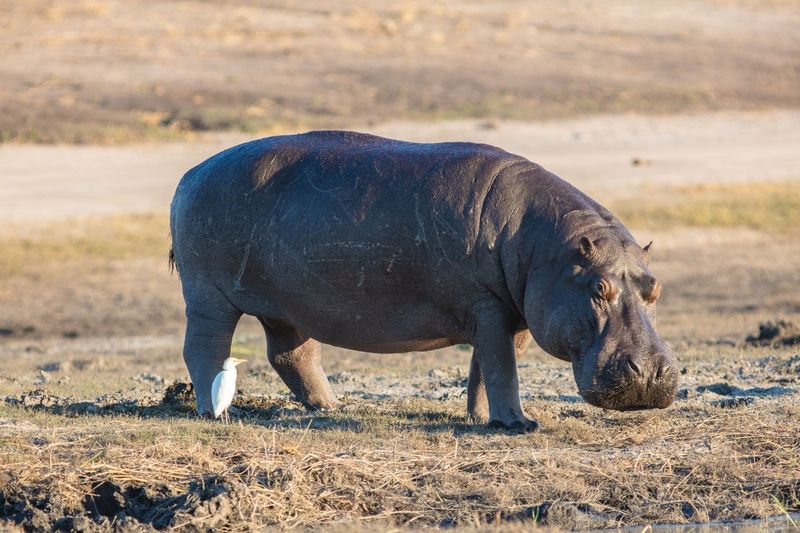
Hippos, with their enormous mouths and hefty bodies, are surprisingly agile in water. Spending much of their time submerged, they emerge at dusk to graze on grasses. Their survival hinges on access to water, making them sensitive to changes in their habitat.
Despite their docile appearance, hippos can be aggressive when threatened, using their large canines to defend their territory. They play a vital role in aquatic ecosystems, creating channels and pools that support other species. Preserving their water sources is essential for maintaining the delicate ecological balance. Hippos embody power and grace in the savanna.
Leopard
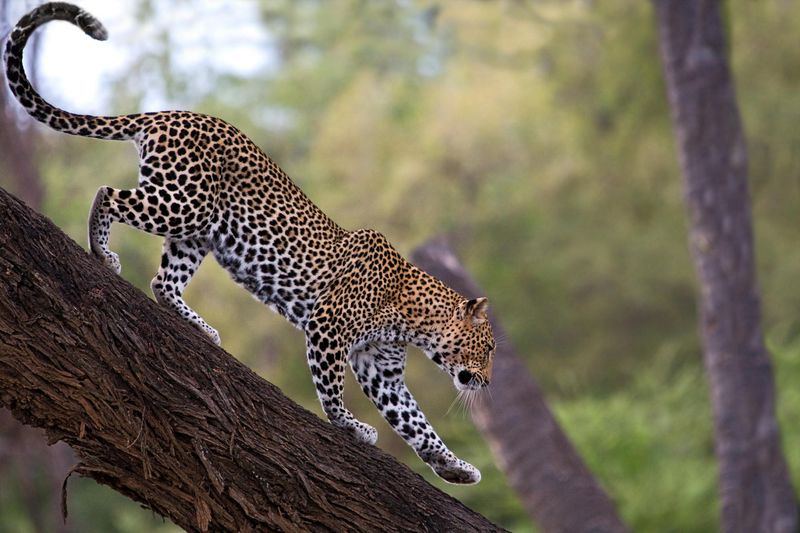
Leopards are solitary and elusive, masters of camouflage in the savanna. Their spotted coats blend seamlessly with the dappled light of their habitat. These agile hunters rely on stealth and strength to ambush prey, often dragging their kills into trees to avoid scavengers.
Their adaptability allows them to thrive in diverse environments, from dense forests to open savannas. Leopards face threats from habitat loss and human conflict, making conservation efforts vital to their survival. Protecting their territory ensures the preservation of this iconic predator. Leopards fascinate with their stealth and solitary nature.
Gazelle
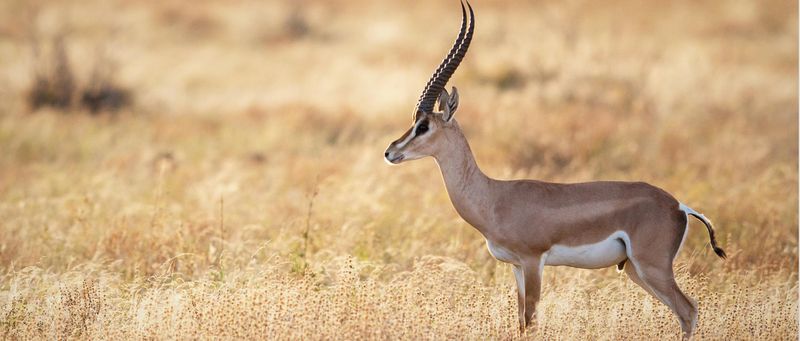
Gazelles, with their graceful leaps and elegant horns, epitomize beauty in the savanna. These nimble herbivores rely on speed and agility to evade predators like cheetahs and lions. Their survival is closely tied to the seasonal rains, which dictate the availability of fresh grazing grounds.
Living in herds, gazelles use their keen senses to detect danger, coordinating rapid escapes. They contribute to the ecological health of the savanna by promoting plant diversity. Protecting their habitats ensures the continuation of their delicate dance of survival. Gazelles captivate with their elegance and resilience.
Ostrich
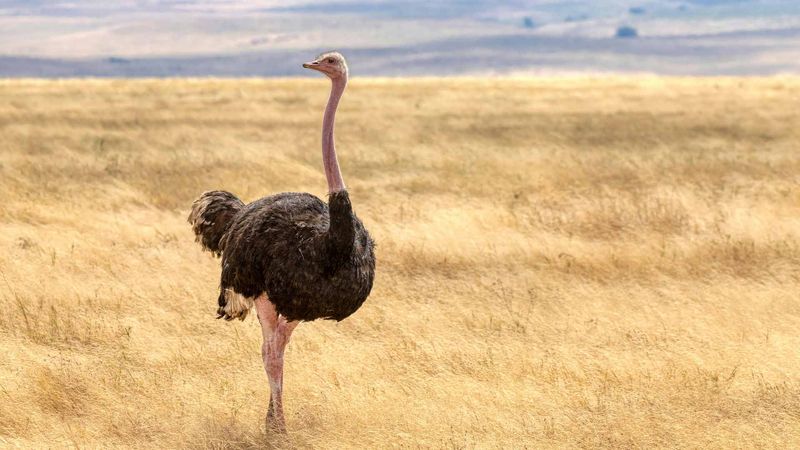
Ostriches, the world’s largest birds, are remarkable runners of the savanna. Despite their inability to fly, they can sprint at impressive speeds of up to 45 mph. Their strong legs and sharp claws make them formidable defenders against predators. Ostriches rely on their keen eyesight to spot threats from afar.
Their survival is intertwined with the open plains, where they lay their eggs in communal nests for protection. Conservation efforts focus on preserving their habitats and mitigating human-wildlife conflicts. Ostriches inspire awe with their speed and adaptability in the wild.
They truly are flightless wonders.
Warthog
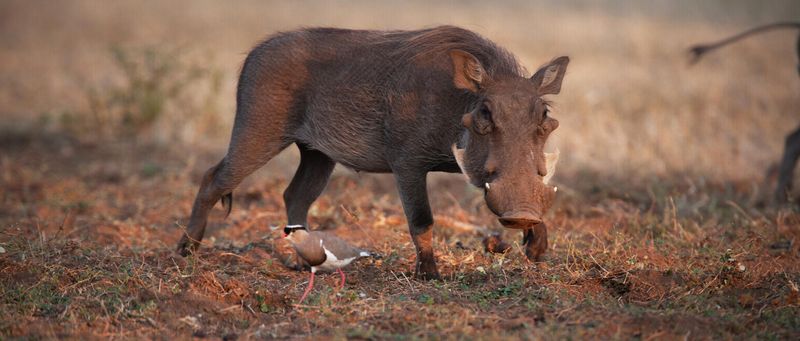
Warthogs, with their distinctive tusks and rugged appearance, are endearing inhabitants of the savanna. These resourceful creatures are known for their playful antics and ability to thrive in harsh conditions. Their survival hinges on their adaptability, as they forage for roots and tubers, using their snouts to dig.
Living in family groups called sounders, warthogs rely on burrows for shelter and protection. They face threats from predators such as lions and hyenas. Conservation efforts aim to preserve their habitats and ensure their numbers remain stable. Warthogs charm with their resilience and spirited nature.
Vulture
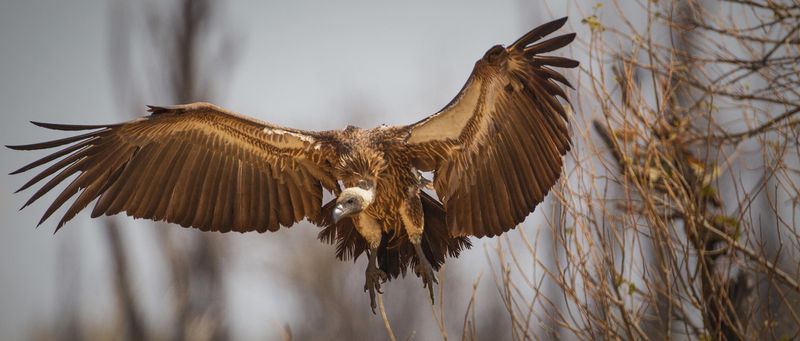
Vultures play a critical role in the savanna ecosystem as nature’s cleanup crew. These scavengers prevent the spread of disease by consuming carcasses, maintaining the health of the environment. Their keen eyesight allows them to locate food from great heights, often soaring in large groups.
Vultures face numerous challenges, including poisoning and habitat loss, which threaten their populations. Conservation efforts focus on protecting their habitats and raising awareness about their ecological importance. Vultures inspire respect with their vital role in nature’s cycle.
They are unsung heroes of the savanna, ensuring balance and cleanliness.
Baboon

Baboons are intelligent and social primates that thrive in the savanna’s diverse landscapes. Living in large troops, they exhibit complex behaviors and communication skills. Their survival is closely tied to their ability to adapt to various environments, from open grasslands to forested areas.
Baboons are omnivorous, foraging for fruits, seeds, and insects, which makes them versatile in their diet. Despite their adaptability, they face threats from habitat destruction and human conflict. Conservationists work to protect their habitats and promote coexistence with human communities. Baboons captivate with their intelligence and social dynamics.
Antelope
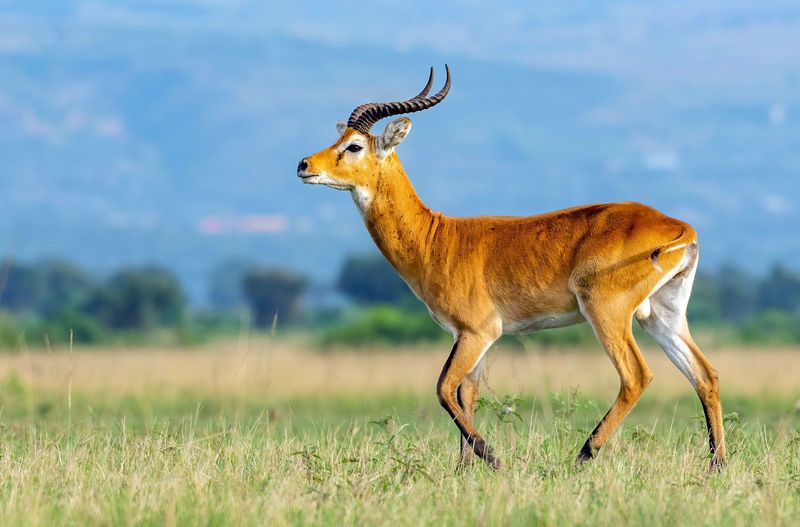
Antelopes, with their diverse species, are quintessential residents of the savanna. Known for their speed and agility, they rely on keen senses to evade predators. Their survival is intricately linked to the availability of water and grazing land, which can fluctuate with the seasons.
Living in herds provides protection against predators, while their varied diets ensure they play a vital role in the ecosystem. Conservation efforts focus on preserving their habitats and managing the impacts of climate change. Antelopes enchant with their grace and adaptability in the wild.
They are symbols of resilience.
Jackal
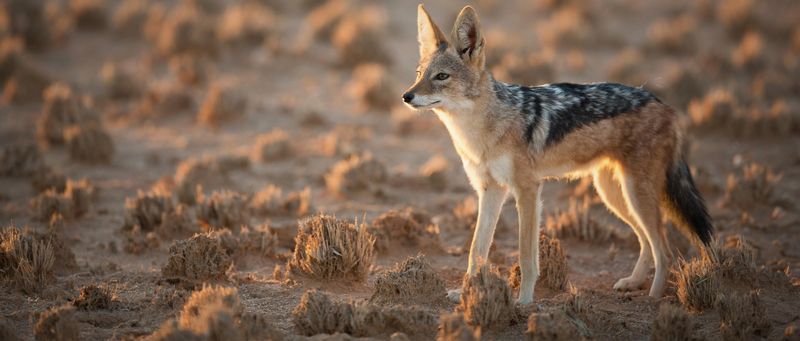
Jackals are cunning and adaptable predators of the savanna, known for their resourcefulness. These opportunistic hunters have a diverse diet, from small mammals to insects and carrion. Their survival depends on their ability to adapt to changing conditions and compete with larger predators.
Living in pairs or small family groups, jackals communicate through vocalizations and scent markings. They play a crucial role in controlling prey populations and maintaining ecological balance. Despite their adaptability, they face threats from habitat loss and human encroachment. Jackals intrigue with their cunning nature and adaptability.
Serval
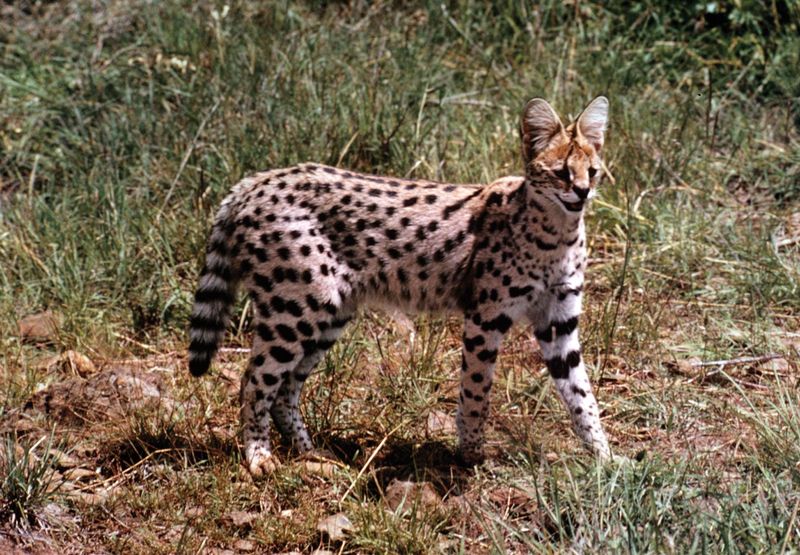
Servals are small yet adept hunters of the savanna, famous for their long legs and large ears. These solitary cats use their exceptional hearing to locate prey, often pouncing with striking precision. Their diet consists of rodents, birds, and insects, showcasing their versatility as hunters.
Servals are highly territorial, marking their domain to ward off rivals. They thrive in diverse environments, but face challenges from habitat destruction and the illegal pet trade. Conservation initiatives aim to protect their habitats and educate the public about their ecological importance. Servals captivate with their agility and keen senses.
Crocodile
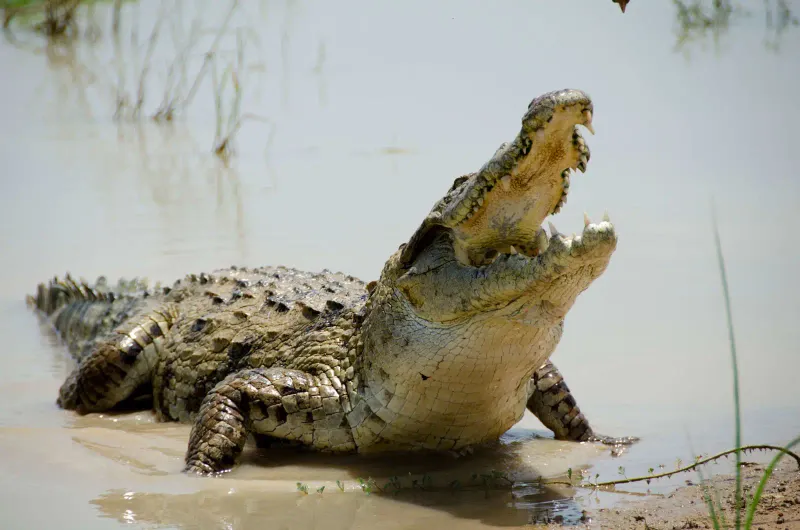
Crocodiles are ancient predators, masters of the waterways in the savanna. Their armored bodies and powerful jaws make them formidable hunters, often ambushing prey at the water’s edge. They play a crucial role in aquatic ecosystems, controlling fish populations and maintaining balance.
Crocodiles are known for their patience, waiting hours for the perfect moment to strike. Their survival is closely tied to the health of their aquatic habitats. Conservation efforts focus on protecting these areas and mitigating human-wildlife conflict. Crocodiles mesmerize with their prehistoric strength and stealthy nature.
They are silent predators of the waters.
Meerkat
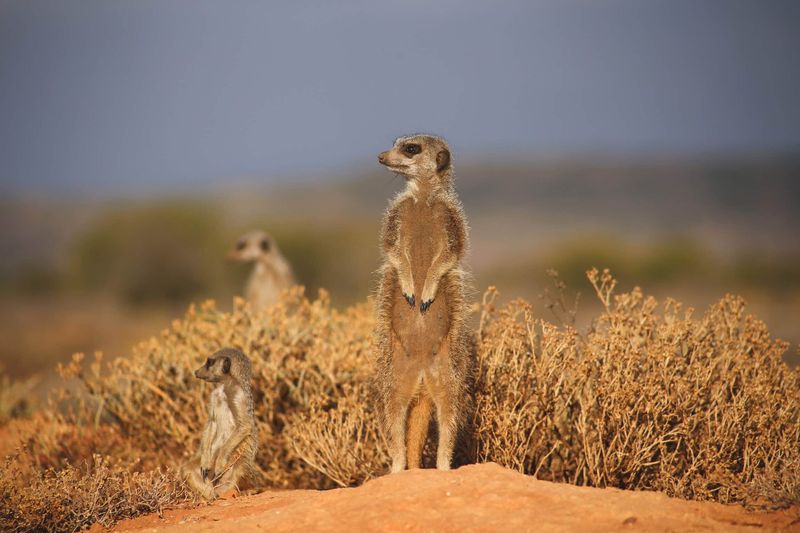
Meerkats are social creatures, known for their cooperative living in the harsh environment of the savanna. These small mammals stand guard while others forage, ensuring the safety of the group. Their survival hinges on teamwork and communication, as they alert each other to potential threats.
Living in underground burrows, meerkats have a diet that includes insects, small vertebrates, and plants. Despite their size, they face threats from predators like birds of prey and snakes. Conservation efforts focus on preserving their habitats and fostering coexistence with humans. Meerkats charm with their social bonds and vigilance.
Kudu

Kudus are majestic antelopes, renowned for their striking spiraled horns and graceful demeanor. These browsers feed on leaves, fruits, and flowers, often in the cooler hours of dawn and dusk. Their survival is intertwined with the availability of diverse vegetation and water sources.
Living in small groups, kudus rely on their keen senses to detect predators and navigate the savanna. They face challenges from habitat loss and hunting. Conservationists work to protect their environments and promote sustainable coexistence. Kudus captivate with their elegance and the majestic allure of their horns.
They truly are icons of the savanna.

